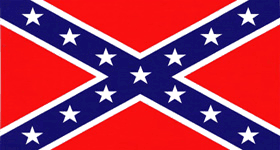 |
Civil War Battles |
|
State War Records |
| AL - AK - AZ - AR - CA - CO - CT - DE - FL - GA - HI - ID - IL - IN - IA - KS - KY - LA - MA - MD - ME - MI - MN - MS - MO - MT - NE - NV - NH - NJ - NM - NY - NC - ND - OH - OK - OR - PA - RI - SC - SD - TN - TX - UT - VT - VA - WA - WV - WI - WY |
The Battle of Tunnel Hill
February 24-25, 1864 in Tunnel Hill, Whitfield County, Georgia
 |
|||||||||||||||||||||
|
Prodded into activity by Lt. Gen. Ulysses S. Grant, Maj. Gen. George H. Thomas late in February sent a portion of his Army of the Cumberland southeastward from near Ringgold, Georgia, toward Dalton. Four divisions under Maj. Gen. John M. Palmer had been ordered to reconnoiter the positions of Gen. Joseph E. Johnston's Army of Tennessee and to prevent it from detaching troops to more active theaters.
Palmer's reconnaissance began on the 22nd and was well advanced by the 24th. On that morning, the IV Corps division of Brig. Gen. Charles Cruft moved south from Varnell's Station toward Rocky Face Ridge, a steep natural barrier just west of Dalton. Advancing simultaneously from the northwest was Palmer, with the 3 divisions of his XIV Corps, under Brig. Gens. Jefferson C. Davis, Richard W. Johnson, and Absolum Baird. The 2 columns linked just above Tunnel Hill, a northwestern spur of Rocky Face Ridge, where they encountered Confederate outposts.
Covered by Johnston's division and an artillery barrage, Davis' troops clambered up the north slope of the hill. Skirmishers chased the outposts from the summit without difficulty. The Confederates, however, crossed to Rocky Face Ridge and atop it manned prepared positions near a wide defile named Buzzard's Roost Gap. There they joined a part of Johnston's main line, 3 infantry brigades and 2 batteries under maj. Gen. Alexander P. Stewart, with 4 other brigades and another battery in close support.
Determined to press his reconnaissance, Palmer launched a 2-pronged offensive early on the 25th. His flanks guarded by Baird's division and a cavalry brigade under Col. Eli Long, Cruft assaulted the north side of the ridge at about 11:00 A.M. His 2 brigades, led by Cols. William Grose and Thomas E. Champion, scatered Confederate skirmishers, then drove their supports from a steep, timbered ridge. When about to attack a second Confederate line, however, the Federals were halted by Palmer's order. Soon afterward, in an effort to relieve pressure on Cruft, Davis sent Morgan's brigade and that of Brig. Gen. Daniel McCook up the west side of the ridge toward Buzzard Roost Gap, only to see the columns sliced apart by frontal and flank fire.
Having suffered some 350 casaulties, Palmer ordered a general withdrawal that evening. His reconnaissance had been effective. In response to it, Johnston had recalled much of Lt. Gen. William J. Hardee's corps, recently dispatched to Mississippi to oppose Maj. Gen. William T. Sherman's Meridian Campaign.
